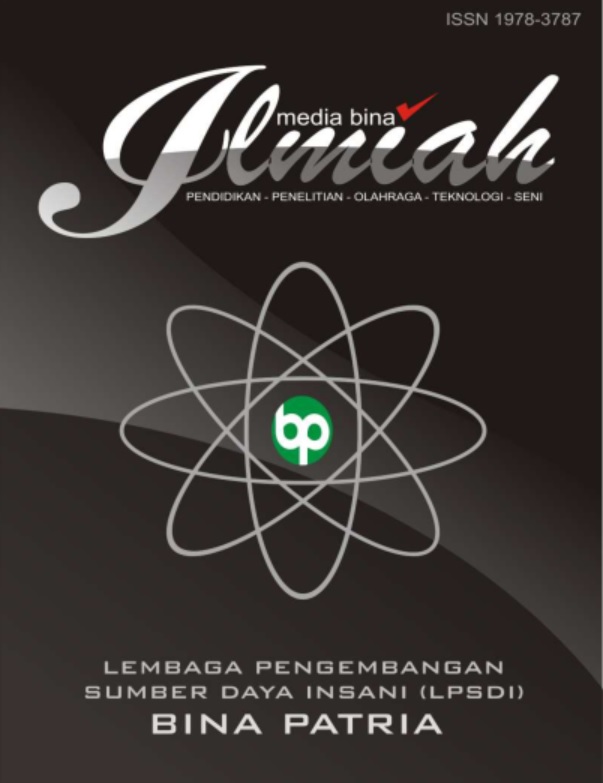FAMILY CONTROL DAN FINANCIAL CONSTRAINTS
Keywords:
cash flow, investasi, family CEO,, financial constraints, family controlAbstract
Isu-isu yang berkaitan dengan financial constraints telah menjadi subjek penelitian yang menarik. Pemegang saham dengan kepemilikan besar dan karakteristik yang khas seperti family firm juga dianggap dapat mengurangi sensitivitas investasi terhadap arus kas. Penempatan anggota keluarga sebagai CEO perusahaan juga dianggap dapat mengurangi sensitivitas investasi terhadap arus kas. Studi ini menyelidiki pengaruh family firm dan family CEO terhadap sensitivitas investasi terhadap arus kas. Sampel yang digunakan oleh penulis adalah perusahaan manufaktur yang terdaftar di Bursa Efek Indonesia. Hasil analisis regresi menunjukkan bahwa arus kas perusahaan berpengaruh positif terhadap investasi. Hasil lainnya juga menunjukkan bahwa pengaruh positif arus kas terhadap investasi lebih lemah pada perusahaan dengan status family firm dan pada perusahaan yang memiliki family CEO. Hal ini berarti bahwa family firm dan family CEO dapat memperlemah sensitivitas investasi terhadap arus kas perusahaan yang mengalami financial contraints.
References
Agung, J. (2000). Financial Structure, Firms’ Investment and the Channels of Monetary Policy in Indonesia. In Buletin Ekonomi dan Perbankan (pp. 146–178).
Anderson, R. C., Mansi, S. A., & Reeb, D. M. (2003). Founding family ownership and the agency cost of debt. Journal of Financial Economics, 68(2), 263–285. https://doi.org/10.1016/S0304-405X(03)00067-9
Andres, C. (2008). Large shareholders and firm performance-An empirical examination of founding-family ownership. Journal of Corporate Finance, 14(4), 431–445. https://doi.org/10.1016/j.jcorpfin.2008.05.003
Andres, C. (2011). Family ownership, financing constraints and investment decisions. Applied Financial Economics, 21(22), 1641–1659. https://doi.org/10.1080/09603107.2011.589805
Barontini, R., & Caprio, L. (2006). The effect of family control on firm value and performance. European Financial Management, 12(5), 689–723.
Chua, J. H., Chrisman, J. J., & Sharma, P. (1999). Defining the Family Business by Behavior. Entrepreneurship Theory and Practice, 23(4), 19–39. https://doi.org/10.1177/104225879902300402
Claessens, S., Djankov, S., Fan, J. P. H., & Lang, L. H. P. (2002). Disentangling the incentive and entrenchment effects of large shareholdings. Journal of Finance, 57(6), 2741–2771. https://doi.org/10.1111/1540-6261.00511
Devereux, M., & Schiantarelli, F. (1990). Investment , Financial Factors , and Cash Row: Evidence from U.K. Panel Data. Asymmetric Information, Corporate Finance, and Investment, January, 279–306.
Gibson, C. H. (2004). Financial Reporting & Analysis: Using Financial Accounting Information. South-Western.
Hidayat, R. (2010). Keputusan Investasi dan Financial Constraints: Studi Empiris pada Bursa Efek Indonesia. In Buletin Ekonomi dan Perbankan (pp. 457–480).
Hovakimian. (2006). Corporate Investment with Financial Constraints : Sensitivity of Investment to Funds from Voluntary Asset Sales Authors ( s ): Gayané Hovakimian and Sheridan Titman Source : Journal of Money , Credit and Banking , Vol . 38 , No . 2 ( Mar ., 2006 ), pp . 3. 38(2), 357–374.
Kaplan, S. N., & Zingales, L. (1997). Do Financing Constraints Explain Why Investment is Correlated with Cash Flow?. Quarterly Journal of Economics, 112, 169-215.
Lee, C., & Park, H. (2016). Financial constraints, board governance standards, and corporate cash holdings. Review of Financial Economics, 28, 21–34. https://doi.org/10.1016/j.rfe.2015.10.001
Madyan, M., Meidiaswati, H., Sudana, I. M., & Sasikirono, N. (2018). The PROPER award, CSR performance, and market performance in the indonesia stock market: does environmental award create value? Airlangga International Conference on Economics and Business 2018, 59–70. http://aiceb.feb.conference.unair.ac.id/
McConaughy, D. L. (2000). Family CEO versus non-family CEO in the family controlled firm. Family Business Review, Vol. 13(No. 2), 121–132.
Miller, D., Le Breton-Miller, I., Lester, R. H., & Cannella, A. A. (2007). Are family firms really superior performers? Journal of Corporate Finance, 13(5), 829–858. https://doi.org/10.1016/j.jcorpfin.2007.03.004
Pindado, J., Requejo, I., & de la Torre, C. (2011). Family control and investment-cash flow sensitivity: Empirical evidence from the Euro zone. Journal of Corporate Finance, 17(5), 1389–1409. https://doi.org/10.1016/j.jcorpfin.2011.07.003
Steven M, F., R., G. H., & Bruce C., P. (1998). Financing Constraints and Corporate Investment. Brookings Paper on Economic Activity. In Brookings Papers on Economic Activity (pp. 141–195).
Sudana, I. M. (2015a). Manajemen Keuangan Perusahaan. Penerbit Erlangga.
Sudiyanto, B., & Puspitasari, E. (2010). Puspitasari & Sudiyatno. Kajian Akuntansi, 2(1), 9–21.
Villalonga, B., & Amit, R. (2006). How do family ownership, control and management affect firm value? Journal of Financial Economics, 80(2), 385–417. https://doi.org/10.1016/j.jfineco.2004.12.005
Ward, J. L. (2004). Perpetuating the Family Business: 50 Lessons Learned from Long-Lasting, Successful Families in Business. Palgrave Macmillan.
Weston, J. F., & Eugene F. Brigham. (1993). Essentials of Managerial Finance (Tenth Edit). The Dryden Press.
Downloads
Published
Issue
Section
License
Copyright (c) 2025 Rahmat Setiawan , Dendy Suarista Suryanegara , Arka Prabaswara

This work is licensed under a Creative Commons Attribution 4.0 International License.
















